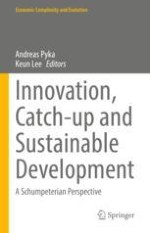2021 | OriginalPaper | Buchkapitel
Science and Technology Relatedness: The Case of DNA Nanoscience and DNA Nanotechnology
verfasst von : Hanh Luong La, Rudi Bekkers
Erschienen in: Innovation, Catch-up and Sustainable Development
Aktivieren Sie unsere intelligente Suche, um passende Fachinhalte oder Patente zu finden.
Wählen Sie Textabschnitte aus um mit Künstlicher Intelligenz passenden Patente zu finden. powered by
Markieren Sie Textabschnitte, um KI-gestützt weitere passende Inhalte zu finden. powered by
